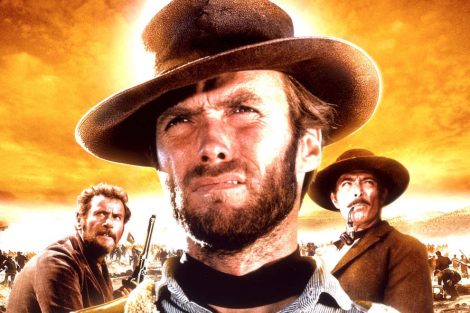The scale of the tragedy, almost 85 million infected and more than 1.8 million deaths, nullifies any optimism. The coming economic disaster and the social consequences of the pandemic mark 20/20 as a cursed year. And yet…
The previous great global health crisis, the Spanish Flu, had a cost in human lives 40 times greater than that of covid-19. The response of the international scientific community generated the extraordinary achievement of creating several vaccines in a few months.
It is surely too early for us to process the great lessons that this particular historical moment offers us. The pain and grief have not dissipated. Emotional confusion and fear define social humor in much of the planet.
Whether we have contracted the disease or not, in one way or another we are all victims of the brutal force of nature that, unlike the previous five waves of mass extinction, this time was expressed through a miserable and tiny virus.
Either way, it’s worth digging through the rubble to find some light on what awaits us around the corner.
I. The same boat …
The beginning of the third decade of the 21st century confronts us with a reality impossible to evade: the almost 8 billion human beings that inhabit this world are connected by much more than an almost identical genetic code. Despite the illusion that skin color, money, nationality, religion or even the level of accumulated knowledge separate us, the irrefutable fact is that – as demonstrated by the fragility of the human species before an organism made up of how many molecules–, we all go together on the same journey.
It is also true that the pandemic has not hit the same everywhere. In fact, in 140 of the 220 countries in which the world map is divided, the loss of human lives registered is less than 1,000. So far at least, most of the tragedy has been concentrated in some 40 countries, especially in America and Europe.
Since the beginning of the year, doctors knew very well that the new disease would hit the weakest hardest, those who already suffered from a disease related to poor diet and poor physical activity. And so it has happened, the vast majority of deaths have been of old people and/or with “preventable diseases” such as diabetes and hypertension.
Because of the huge amounts of money it spends on its health system, because of what its propaganda apparatus proclaims, because of the blind arrogance of its president, it is possible to argue that the biggest loser in this crisis – with more than 20 million people infected and 350 thousand deaths – it was the United States.
Beyond the enormous value (even if it was symbolic) of the global discussion about the importance of the use of the mask, it is revealing that the United States, Brazil and Mexico, where their respective presidents refused to use it and did everything possible to minimize the magnitude of the problem, a third of all deaths have been recorded.
II. The nao of China
The fact that China occupies 43rd place on the list of most deaths, being the most populous nation and the place where the new disease first emerged, reveals a lot about the current order of things.
Whether due to the authoritarian nature of many of its governments, the discipline of its people, or the massive use of new tracking technologies, it is not too surprising the (relatively) little impact that the pandemic has had in many of the countries. from Southeast Asia.
It is also true that in a world economic system in which two-thirds of the population is confronted every day with the dilemma that if they do not work today, they do not eat today, the “stay home” formula and the “healthy distance” I end up being a simple aspiration, a luxury, and not a matter of personal irresponsibility; that there was also.
III. Politics and money
From the perspective of political power, it is clear that the main challenge has always been to avoid images of overflowing hospitals.
Beyond the obvious impossibility for any country to have artificial respiration equipment for each of its inhabitants, it is clear that no matter how prosperous or repressive it was, there is no government that can resist the scenes typical of the worst zombie movies, with a crowd on the brink of suffocation (literally) crowds in vain in front of the doors of the health services.
And although the official figures were evidently manipulated in a good number of countries, based on the evidence available so far, it is possible to argue that in general terms this grim scenario did not occur.
In any case, as happened in the United States, the COVID crisis allowed the tenant of the White House to return to play his rightful role as The Court jester.
IV. There were also winners
At the end of the day, in the strict sphere of health, it is very likely that the main difference between the “Spanish flu” that killed more than 50 million people 102 years ago and the current covid-19 is that, over the last century, and especially in the last four decades, six-seventh parts of the world’s population have managed to have access to the most elementary conditions of hygiene and health care. And of course, awareness about it, especially hand washing.
The economic collapse was and will be, major. With a global drop of more than 4 percent, in some countries, it was much worse. For industries such as entertainment, hospitality, and tourism, the consequences may be structural. As part of a trend that had manifested itself before the pandemic, but accelerated during the 1920s, unemployment could reach huge segments of the population, particularly among rich countries. Ideal cultivation field for neo-fascists and fundamentalists of all signs.
Although, it must also be recognized, among the great winners of this year of generalized economic decline, are the large technology companies of that country – Apple, Alphabet (Google), Amazon, Facebook, and Microsoft – whose accumulated market value reached 8 trillion dollars this year. This is even more relevant considering the growing opposition, social and legal, to the monopolistic and oligopolistic practices of some of them.
In this sense, the great crisis of 20-20 served to finish crossing the bridge between digital reality and analog reality. The future, that is to say, it comes from the first moment of 2021, will have as a pillar the revolution of information and communication technologies.
V. The future has arrived
If something good caused the pandemic, it was, of course, the hectic work of groups of scientists from various countries that led to the development of more than half a dozen vaccines in record time. As well as revealing the fragility we have as a species, the miserable creature allowed us to demonstrate the extent of our best capabilities.
Due to all of the above, 2021 has the potential to be the moment of a kind of reset of a good part of the old system. In particular to finish crossing the bridge of the era of hydrocarbons that already has us on the brink of the abyss of ecocide and to be able to enter the era of rational consumption and renewable energies.
The forced adjustment of 20 20 to many of our social practices – from managing leisure to personal relationships and multiple cultural habits – will most likely have consequences for a long time. Without a doubt, the field of mental health is where you will have to be more careful.
Although stumbling and unevenly, the service economy – the one that generates the most wealth in the world today – was able to continue to function during the pandemic thanks to the internet, which passed the test. This opens a door for sectors such as education, health, finance, commerce and many others to move much further along the digital highways, not saturated and more open to creativity and innovation, and much less to through the crowds and traffic jams of old asphalt roads and bureaucracies.
What has been its main expression, the “smart” mobile device, is likely to remain on the pedestal for some time to come. But today there should be no greater doubt about the impact that the next tsunamis will cause of the robotization of a good part of industrial and even agricultural production, the Internet of things, Artificial Intelligence, the so-called “usable” and other by-products of the digital universe.
Of course, the current pandemic is not over. “The worst is coming” seems more a natural conclusion to the evidence of Christmas than a pessimistic mood. The distribution of vaccines is a gigantic challenge both in logistics and in opening the many millions of medieval minds that, to top it all, also use social networks.
And sure, other pandemics will come. Poverty is going to grow, as is the gap between the filthy rich and everyone else. And even if Mr. Trump ends up sinking into his failure and bitterness, new Savanarolas will come that will try to capitalize on the frustration, ignorance, and hatred of broad social segments in almost all countries. However, being able to share these lines with you seems to me reason enough to renew hope for a better tomorrow. Our shared condition as survivors offers us an extraordinary opportunity: to give each other a big hug very soon.










